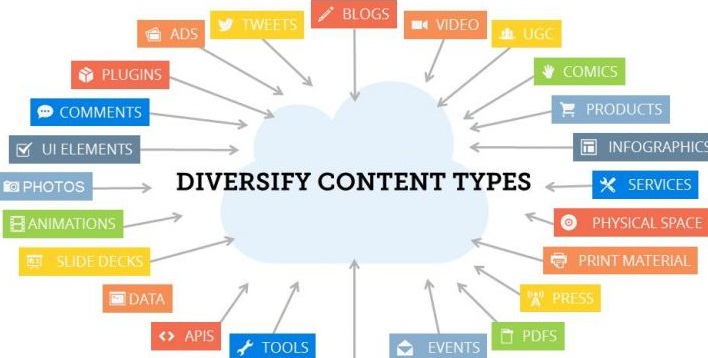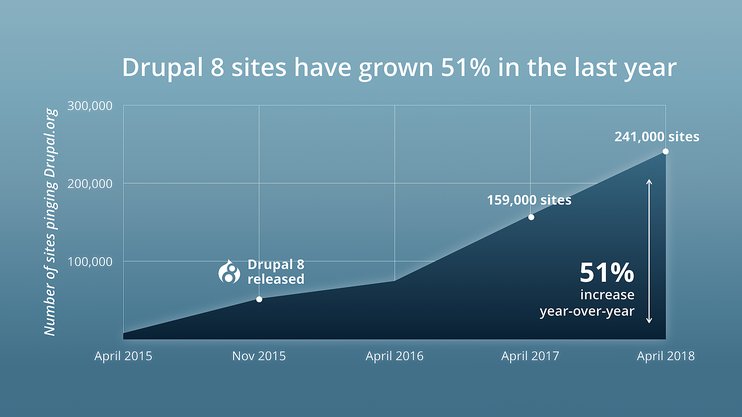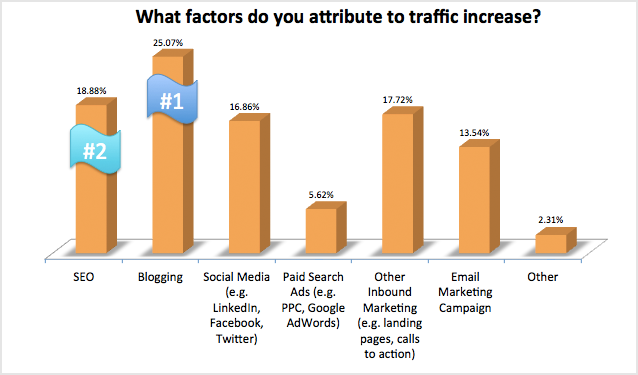How Drupal is helping to construct better paths in the journey of content management?
As a content strategist, we know that “Content is the King”. We hustle every day to create splendid content that’s deserving of even getting close to that royal title - because let's face it, we all want our content to be unique and surprising.

The content can vary from blogs to forms to contact address. The question, however, is - which CMS can help you manage the content that directly impacts the reader's mind, letting the audience engage with your brand the way you want them to?
The resounding answer has to be - Drupal!
Drupal provides its users with many types and varieties of content that helps them to manage the website in terms of ranking and traffic.
Drupal provides the users with intuitive modules which allow them to build their own content types that have their own set of fields.
But What is a Content-Type?
In order to catch the attention of the user, content is produced in various ways such as in the form of an article, newsletter, polls, listings, landing page, among others.
Content types provide the website with a list of content that allows the content editors to add new content to the site. In other words, it enables the user to manage the settings for a category of information in a centralized and reusable manner.

Types of Content Needed
Drupal is one such CMS which has been providing the content editors with modules to handle all the types of content in a website. These modules provide the website with features and capabilities that can be customized.
- Homepage
How many times have you judged a website by its homepage? Well, maybe almost every time.
According to the CEO of Klout Fire, to impress and engage the audience on a website, it needs to orchestrate everything, in other words, the first 15 seconds of the website is the most crucial seconds that engage and delight a customer. Homepage, therefore, becomes important.
Drupal modules like Panels and Ctool help you bring out a homepage with a customized layout that engages with its audience well.
- Blogs
From students to businessmen, blogging has grown out to be a platform used by millions. One of the popular mediums to promote business, blogging must be part of every business.
Part of the core now (as a content type), Drupal’s blog module allows authorized users to build and maintain any type of blog. It provides the content editors with standard blogging functionality to the site, where users with defined permissions can create, edit, and update blogs.
- E-newsletters
Another popular marketing initiative, newsletters are frequently used to keep the audience informed and offer promotional content. Many businesses and marketers use newsletters to promote their products and services.
An effective way of maintaining and providing the audience with topics that are current and trending, newsletters offer organizations a unique opportunity to nurture and educate the target audience.
There are essentially two ways to build a newsletter in Drupal.
- Newsletter module strictly aims at the frequency or number of contents. It is especially recommended for people that need more than one newsletter list for their site. Newsletter module aims to be a full blown newsletter solution for Drupal 7.
- Simplenews module brings the new content type that can be sent via email to all the subscribers of the associated newsletter.
Other options in Drupal include MailUp Newsletter Module, mailman, and MailChimp.
- Landing Pages
A crucial part of the inbound marketing strategy, building, and testing landing pages is one of the top five challenges faced by B2B marketers.
Drupal has paragraph module to create templates for landing page and stacks module to allow content editors to create complex pages without the need of developers.
Companies see a 55% increase in leads when they increase their number of landing pages from 10 to 15.
- And much more
Other content types involve guides, book pages, tutorials, case studies, and infographics.
Drupal consists of modules like book helper, book module that help to build interesting and interactive guides. Apart from this, the charts module provide a good way for the user to visualize a lot of information.
Content, Marketing, and Drupal: What is There for Marketers?
Websites using Drupal 8 has grown up to 51 percent in 2018 in comparison to the previous year.

Easy content management can easily be one of the reasons for its popularity. But there is more to it. More as to why you must opt for Drupal.
-
Reducing the Cost
Drupal does not induce any licensing cost. Old news, but it is free.
Other than the software cost, the visual designs of your Drupal website can be completely rebuilt without investing in the backend architecture. Drupal is also completely customizable from the get-go even with respect to the editor tools, workflows, and roles. This involves the money that would go towards the customization of the projects. Thus, benefiting the marketers in terms of budget and funds.
-
Content and Personalization
According to the Content Marketing Institute, 71% of the content editors customize their content on the basis of audience interest. Content types like blogs, landing pages, newsletter, infographics are important factors that contribute to the ideal way of reaching and interacting with the customers. These content types deliver relevant information to the audience based on their interests and motivations.
Drupal lets you deliver personalized content.
Drupal’s Acquia Lift, a data-driven personalization module that brings content and customer data together from multiple sources, providing customized experiences across any channel or device.
Most importantly, it allows businesses to construct a consistent personalized experience across digital platforms.
Providing easy integration with third-party tools Drupal further facilitates the personalization process.
-
Building Custom Content Types with Drupal
As a marketer, if your needs vary from the ones mentioned above or if you are looking to build some new type of content type for your audience to devour, Drupal helps you with that too.
Build news sections, postcards, manuals with Drupal without coding.
Without any coding, with the use of content construction kit (CCK) and views modules, you can build new content types and produce advanced custom views for those types.
-
Ease of Adding Multimedia Content
Since we know that people are more likely to remember images and videos, how can we afford to not add them in our blogs?
Drupal’s Media Library provides a views-based browser for previously uploaded media. You can also add media to content via media field, either by selecting from existing media or by uploading new media.
Not just this, with oEmbed support now, it allows the embedding of external media, such as YouTube and Vimeo videos.
Using Drupal features and functionalities along with digital media solution enhances the ensured reusability and real-time tracking of media assets.
Drupal, is the whole framework for administering content on the website.
-
Adding Themes to the Content Types
The one-size-fits-all theory doesn’t work in the internet era.
While themes ensure that your website looks great your one theme won’t be compatible with the different types of content on your website.
Drupal has replaced the PHP Template with the all-new Twig Template in its latest update, which not only makes it easy to edit themes but customize the ones according to your needs very easily.
With the addition of new template engine, Drupal gives you responsive and mobile-friendly themes.
The main goal is to deliver the audience with the power of overriding all the templates and change the front end for modifications. Therefore the visual design of a website can be entirely rebuilt with the help of Drupal, without actually spending on any back-end architecture differences.
All the Drupal Themes for 2018
-
SEO Friendly
People trust search engines. In fact, 50% of visitors are more likely to click a result if the brand appears multiple times in search engine results.
Writing great content will not suffice, your CMS have to have SEO capabilities in order to make your business visible.
According to a survey by Neil Patel Digital, SEO is the 2nd most used practices of all time that affects the traffic of a website.

When it comes to Drupal, there are a variety of SEO friendly modules that help the website reach a better rank. The extensive list of SEO modules includes Page Title, SEO Checklist, Meta tags, Taxonomy Title, HTML Purifier, Real-time SEO.
Drupal’s out-of-the-box schema tags help search engines identify what the page is about, its relevant and how useful will it be for a specific query.
Drupal presents the users with a comprehensive control over the URL structure with the help of modules like Pathauto, and maintain a clean understandable URL structure with the help of Global Redirect.
-
Content Monitoring
For a content marketing strategy to be successful, it needs to be underpinned by data. After all, how do you decide if some information is tangible or not? Or how else would you know how your content is performing?
Since data never lies, you need to have actual audience insights for your next marketing strategy.
Google Analytics is one of the best tools for monitoring the traffic on a website while providing real-time updates about the number of visitors, how much time they are spending, popular pages visited by them among other information.
Drupal’s Google Analytics module lets you add the Google Analytics web statistics tracking system to your website, so you can:
- Selectively track and exclude certain users, roles and pages.
- Monitor different types of links
- Monitor the type of files that are being downloaded from your pages
-
Community and Engagement
Among all the marketing strategies, fostering customer loyalty brings results. Businesses seeking to build more engagement and repo among its users can’t miss out on community outreach.
Content, community, and business go hand in hand.
Community brings engagement. And engagement returning users.
In order to ensure a splendid digital experience, the ideal CMS must provide value to integrate with community building technologies.
With a community of more than 200,000 people, Drupal is the best example of what it can do for the community platforms.
You can serve your audience better if you know what they are looking for. Integrating with almost all the acknowledged ERP systems which are available like Alfresco, Salesforce, Bynder, and SugarCRM.
Additionally,
- Drupal grants marketers with modules like Disqus and HybridAuth Social Login to connect with the audience. It allows them to connect more strongly with customers and transform more prospects into buyers.
- Drupal helps power up the websites with chatbot for an interactive and a guiding experience to the user. It can incorporate the Chatbots and connect with the people giving them a better user experience.
Conclusion
Increasing traffic, retention and conversion is mostly the main agenda of every website holder, and Drupal contributes vividly in this part as a content manager. It offers a dozen powerful modules for maintaining and creating content.
Create personalized content with OpenSense Labs, drop a mail at [email protected] and experience the best content management services and solutions.
Subscribe
Related Blogs
Inside the Drupal AI Summit: Themes, Speaker and What To Expect

“ The web is changing fast, and AI is rewriting the rules. It writes content, builds pages, and answers questions directly,…
FOST and Drupal AI Initiative: Next Era of Responsible AI

Three years after the launch of generative AI tools marked a new age for artificial intelligence, almost 90% of survey…
Drupal AI Ecosystem Part 5: AI Content Suggestions

Drupal has steadily evolved from being just a content management system into a flexible platform that incorporates emerging…




